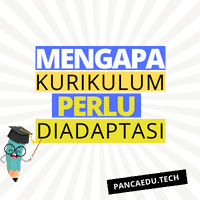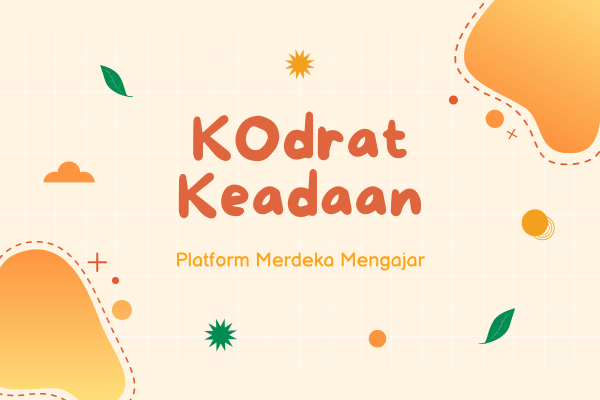Why the Curriculum Needs to be Adapted
The Importance of Curriculum Adaptation
Adapting the curriculum is an essential need in the field of education. As educators, it is important for us to understand why we need to adapt the nationally prescribed curriculum. Through adaptation, we can align the curriculum with the specific needs and contexts at the school level.
Diverse School Contexts
The nationally prescribed curriculum serves as a general guide that provides a framework for delivering learning materials in all schools. However, each educational institution has differences in terms of geographical, cultural, social, and environmental conditions. Therefore, it is important for us to adapt the curriculum to fit the unique characteristics of each educational institution.
In a previous article, we discussed the importance of curriculum changes and some reasons why they need to be made. This time, let's delve deeper into the aspects that influence curriculum adaptation at the school level.
The school's surrounding environment is one of the important factors to consider in curriculum adaptation. Each school is located in a different place. For example, there are schools located by the seaside, in the midst of coffee plantations, or in densely populated urban areas. Each environment has its own characteristics and challenges.
Local Culture and Diversity
Let's take Mr. Haryanto, the principal of Gunung 01 Elementary School, located in the midst of a coffee plantation on the foothills, as an example. He realizes that the surrounding environment of his school offers unique potential for learning. For instance, his students often encounter snakes when accompanying their parents in the garden. This provides an opportunity to integrate real-life experiences with learning about ecosystems.
Through direct observation of the animals around the school, students can learn more effectively about ecosystems and their relevance to daily life. They can learn about the life cycle, food chain, and the importance of maintaining ecosystem balance. By connecting learning to the environment, students become more interested and can easily visualize what they are learning.
Curriculum adaptation is also related to changes occurring around the school. In the past year, there may have been changes such as new building constructions, infrastructure improvements, or changes in the surrounding population composition. This can have an impact on the lives of teachers and students in the school.
For example, if a new building is erected around the school, it can provide an opportunity to explain concepts related to architecture, technology, or environmental impact associated with the construction. Additionally, changes in the surrounding population composition can influence the learning needs of students. There may be a need to adjust the curriculum to be more inclusive and responsive to student diversity.
Student Heterogeneity
Student heterogeneity is also an important reason to adapt the curriculum. Each student has unique characteristics, backgrounds, and varying levels of abilities. They have diverse interests and potentials. Therefore, the curriculum needs to be tailored to meet the individual learning needs of students.
In adapting the curriculum, we can use a differentiated approach. This approach allows teachers to adjust teaching methods, materials, and assessments according to the needs and abilities of students. Teachers can provide more focused and in-depth learning approaches, as well as enrichment for more capable students.
Additionally, culture is also a significant factor in curriculum adaptation. Each region has its cultural richness. The nationally developed curriculum should encompass and appreciate this cultural diversity. In implementing curriculum adaptation, it is important for us to consider local cultural aspects to make learning more relevant and meaningful for students.
School Operational Curriculum (Kurikulum Operasional Satuan Pendidikan, KOSP)
One form of curriculum adaptation is the School Operational Curriculum (Kurikulum Operasional Satuan Pendidikan, KOSP).
KOSP is a living document developed by all stakeholders in the educational institution. KOSP describes the implementation and adjustment of the national curriculum at the school level, taking into account the local context, student needs, and national educational goals. dokumen hidup yang dikembangkan oleh seluruh pemangku kepentingan di satuan pendidikan. KOSP menggambarkan implementasi dan penyesuaian kurikulum nasional di tingkat satuan pendidikan, dengan memperhatikan konteks lokal, kebutuhan siswa, dan tujuan pendidikan nasional.
In developing KOSP, all stakeholders, including school principals, teachers, parents, and students, collectively analyze and reflect on students' learning needs and the school's conditions. They also integrate the school's vision into KOSP to produce graduates who are intelligent, ethical, responsible, and environmentally conscious.
By adapting the curriculum through KOSP, we can ensure that each student develops according to their time and surroundings. Students' needs and potentials will be well accommodated in the learning process. We can provide meaningful, relevant, and sustainable learning experiences for students.
The curriculum is a document closely related to our daily lives. As educators, we have a crucial role in developing and adapting the curriculum to achieve educational goals. We can benefit from the diversity of students' backgrounds and abilities to design inclusive and effective learning.
In adapting the curriculum, it is important for us to remain open to change and innovation. We need to continue learning, discussing, and collaborating with fellow teachers and other stakeholders. With enthusiasm and hard work, we can create a learning environment that provides every student with the opportunity to develop optimally.







